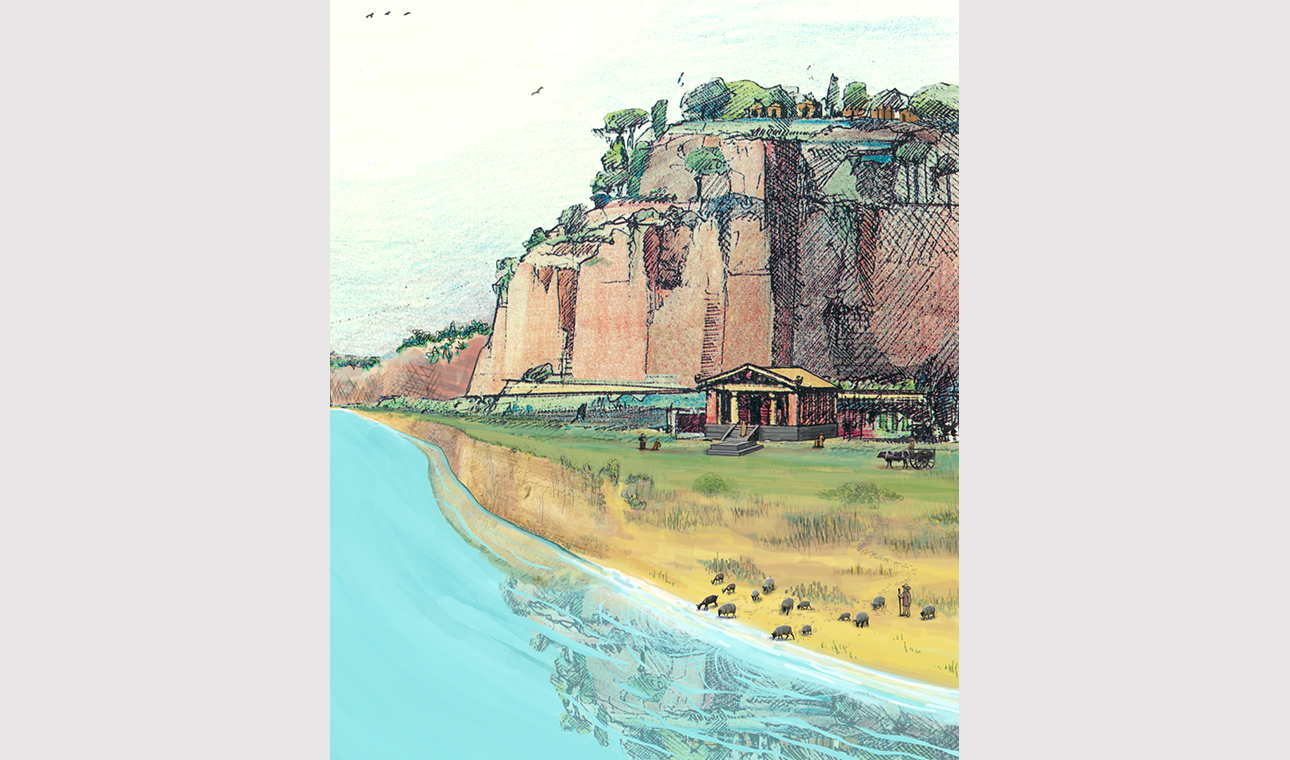Andrea Brock – Rome at its Core: A New History of Early Rome and its Republic

Visualization of Rome’s central riverbank and archaic river harbor temple at the foot of the Capitoline Hill in 560 BCE
This is the first in a series of five lectures on Material Environments, hosted jointly by the American Academy in Rome and the British School at Rome over the academic year 2025-2026. Through five evening lectures, speakers will present new research on environments of ancient and post-Classical Rome and Italy. Changing technologies of research provide new answers to questions about the experience and effect of landscape and climate. These lectures showcase the ways in which environmental considerations recast our study of the past.
The details of Rome’s earliest development have long been relegated to the realm of myth, assumption, or untested hypothesis. Although a focus of antiquarian attention for well more than two millennia, these histories (both ancient and modern) of Rome’s beginnings have necessarily been built on a fragmentary collection of multifarious evidence.
This lecture capitalizes on recent discoveries from a geoarchaeological coring survey of Rome’s central riverbank to offer a new account of the city’s beginnings as a river-reliant community. The Tiber River has long been understood as an important feature in Rome’s early development; indeed, the ancients themselves recognized this fact. But the detail and chronological resolution of new environmental evidence—when combined with the rich corpus of archaeological evidence produced in recent decades and a critical approach to the later literary record—opens exciting research pathways into prehistoric Rome.
Brock argues that archaic building activities at Rome and across the broader region triggered large-scale changes in Rome’s central river valley in the late sixth century BCE. Rapid sedimentation and escalating floods jeopardized pre-established socio-economic structures in Rome’s lowland and created sudden, acute pressures on the nascent community. The maintenance of public spaces and river-related opportunities in the face of changing conditions required increasing levels of collective action. This imperative spurred an expansion of state-level structures with the capacity to ensure enduring management of the landscape and continued exploitation of the river valley. In this way, the environment is a potent and previously underappreciated factor in the origins of Rome’s res publica.
Andrea Brock is Lecturer in Archaeology and Ancient History in the School of Classics at the University of St Andrews.
For access to the Academy, guests will be asked to show a valid photo ID. Backpacks and luggage with dimensions larger than 40 x 35 x 15 cm (16 x 14 x 6 in.) are not permitted on the property. There are no locker facilities available. You may not bring animals (with the exception of seeing-eye/guide dogs).
The Academy is accessible to wheelchair users and others who need to avoid stairs. Please email us at events@aarome.org if you or someone in your party uses a wheelchair or other mobility devices so that we can ensure the best possible visitor experience. If you are someone with a disability or medical condition that may require special accommodation, please also email us at events@aarome.org.